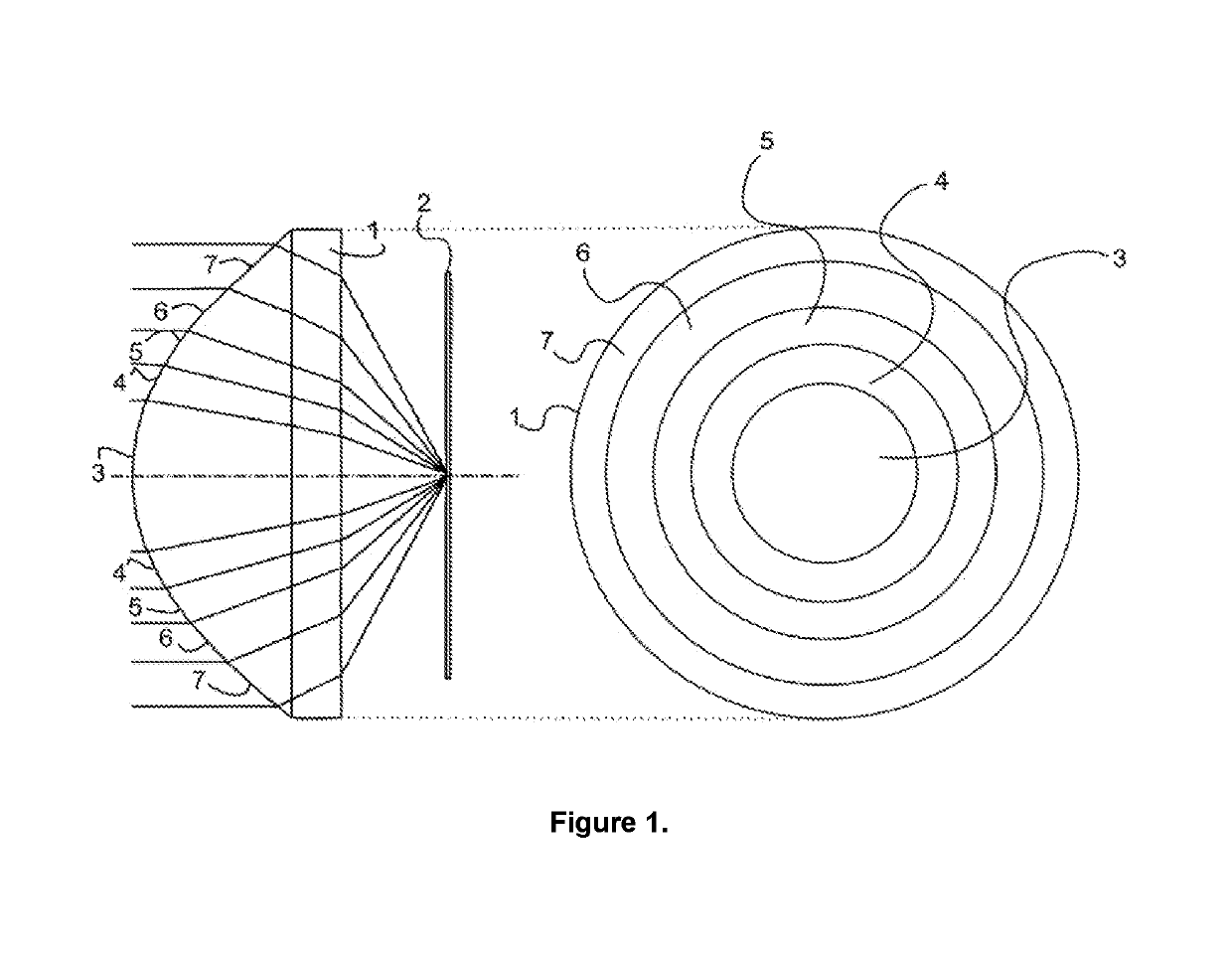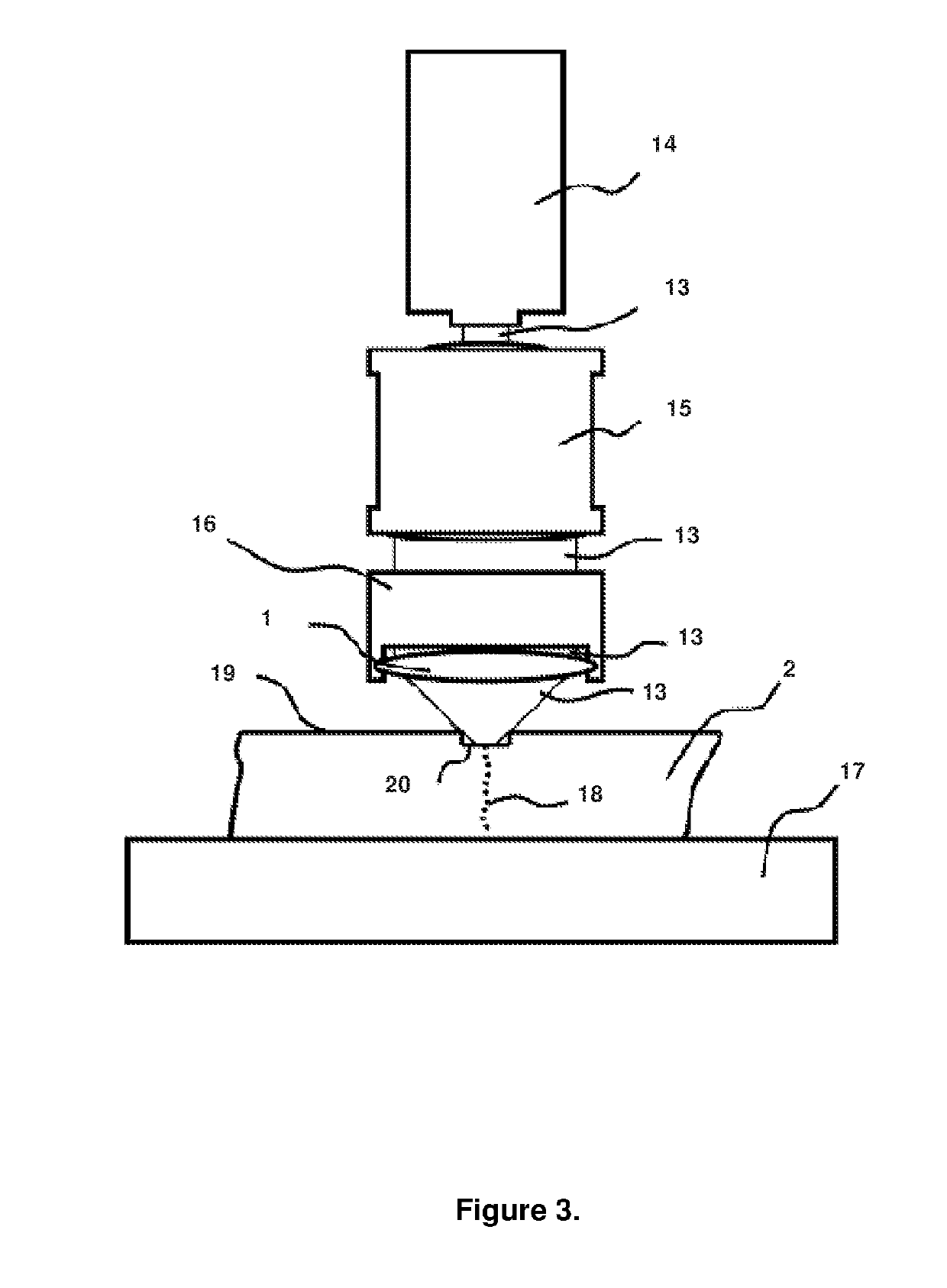Laser processing method and a system for wafer dicing or cutting by use of a multi-segment focusing lens
a laser processing method and focusing lens technology, applied in the field of laser material processing, can solve the problems of reducing the yield and life of the device, limiting the technology of the diamond disk saw, and low processing speed, so as to achieve the effect of high yield, high thickness and effective and rapid laser processing method
- Summary
- Abstract
- Description
- Claims
- Application Information
AI Technical Summary
Benefits of technology
Problems solved by technology
Method used
Image
Examples
example 1
[0055]The Workpiece material is LiNbO3. The workpiece is in the form of a substrate (slab) with a thickness of approximately 190 μm. The laser source is a femtosecond laser having an output radiation wavelength 1030 nm, pulse width 5 ps (full width at half maximum / 1.41), set at an output frequency of 100 kHz. The focusing unit is arranged with a ˜0.8 NA multi-focus segmental aspherical lens, as the beam focusing element. Two laser beams set with different divergences were directed via focusing element. Pulses energies after the beam focusing unit is selected to be 3 μJ and 5 μJ respectively, condensation zones of first and second beams are formed at 20 μm and 80 μm below the first surface of the wafer, respectively. Distance between damage structures along cleaving direction is 3 μm. Processing speed, more particularly the translation speed of the linear translation stage, 300 mm / s. Results after processing and breaking / dicing are shown in FIG. 9.
PUM
| Property | Measurement | Unit |
|---|---|---|
| band gap | aaaaa | aaaaa |
| distance | aaaaa | aaaaa |
| wavelength | aaaaa | aaaaa |
Abstract
Description
Claims
Application Information
 Login to View More
Login to View More - R&D
- Intellectual Property
- Life Sciences
- Materials
- Tech Scout
- Unparalleled Data Quality
- Higher Quality Content
- 60% Fewer Hallucinations
Browse by: Latest US Patents, China's latest patents, Technical Efficacy Thesaurus, Application Domain, Technology Topic, Popular Technical Reports.
© 2025 PatSnap. All rights reserved.Legal|Privacy policy|Modern Slavery Act Transparency Statement|Sitemap|About US| Contact US: help@patsnap.com



